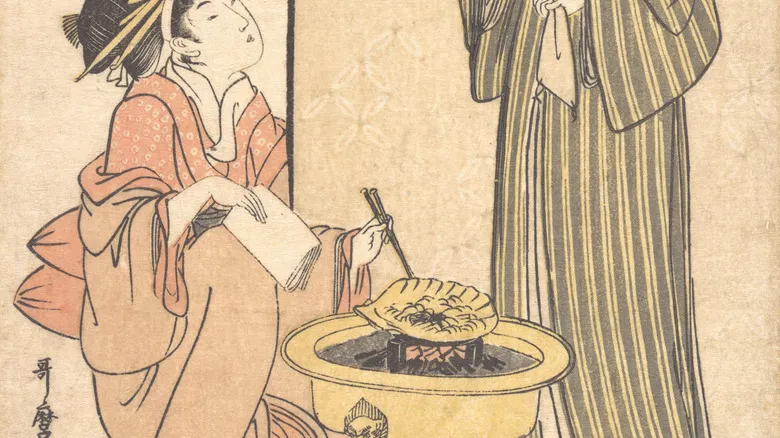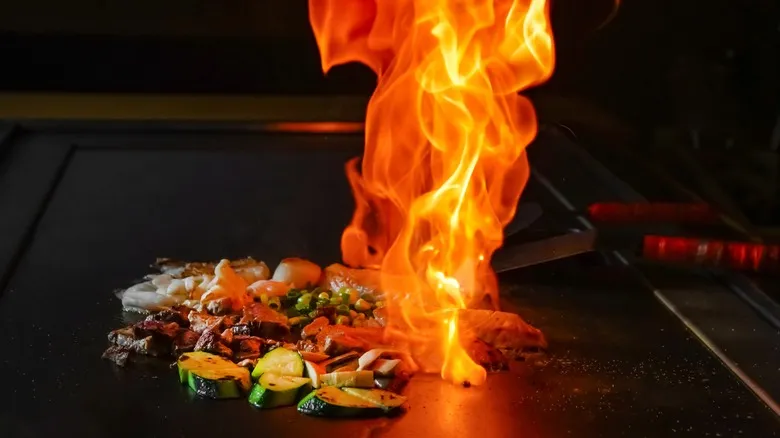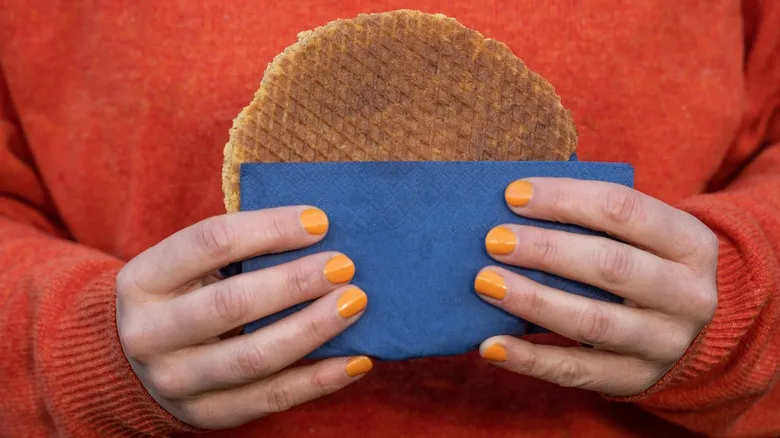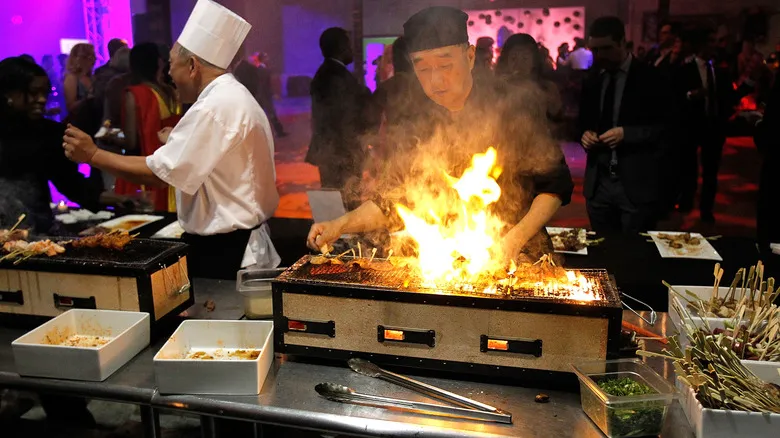Where hibachi originated from

A small clay pot may not have been the most efficient way to heat a room or home, but the hibachi proved valuable for various other purposes. It could be used to warm hands on chilly days or to heat small snacks and treats. Although cooking wasn't the original purpose of these pots, it became increasingly common by the 1800s. It is also believed that during the Edo period, from 1603 to 1868, traveling samurai carried portable clay pots to prepare meals while on the go.
The exact moment when the small clay pot evolved into a larger version is uncertain, but a more contemporary, metal hibachi designed for cooking emerged in the early 20th century. The size of the hibachi also increased to cater to larger groups.
The hibachi grill was not outright replaced by teppanyaki. However, teppanyaki, which means "grilling on an iron plate," gained popularity among foreigners and in mainstream cuisine. Misono, a restaurant chain that opened in Kobe, Japan, in 1945, claims to be the first to introduce teppanyaki to the mainstream dining experience. Tourists were captivated by the spectacle of their food being prepared in front of them, and chefs began to enhance the cooking process with theatrical elements, including tricks like the flaming onion volcano.
Modern cooking with hibachi and teppanyaki

Teppanyaki cuisine made its way to the United States through the renowned Benihana restaurant chain. In 1964, four Japanese brothers established the first location in New York City. Drawing inspiration from the popularity of teppanyaki among foreigners in Japan and its proximity to Broadway, the founders enhanced the theatrical aspect of their chefs, transforming the dining experience into a captivating performance.
At some point, likely when teppanyaki grilling was introduced to international audiences and brought to America, the terms hibachi and teppanyaki began to be used interchangeably. Given the similarities in cooking methods, it's easy to see how the confusion arose. While hibachi has a different meaning in Japan, in the U.S., it refers to the style of cooking food on a teppanyaki grill, often featuring dramatic flair and an open flame in front of diners. Although you can find Japanese restaurants in the U.S. with hibachi grills, most of these are electrically powered rather than using charcoal, ensuring safety for indoor cooking.
Recommended

The Folklore Behind Stroopwafel, The Netherlands' Most Iconic Treat

The Mysterious History Of Vietnamese Pho

13 Iconic Dishes That Were Actually Invented In America

We Can Thank This US State For Growing The Most Blueberries
Next up

